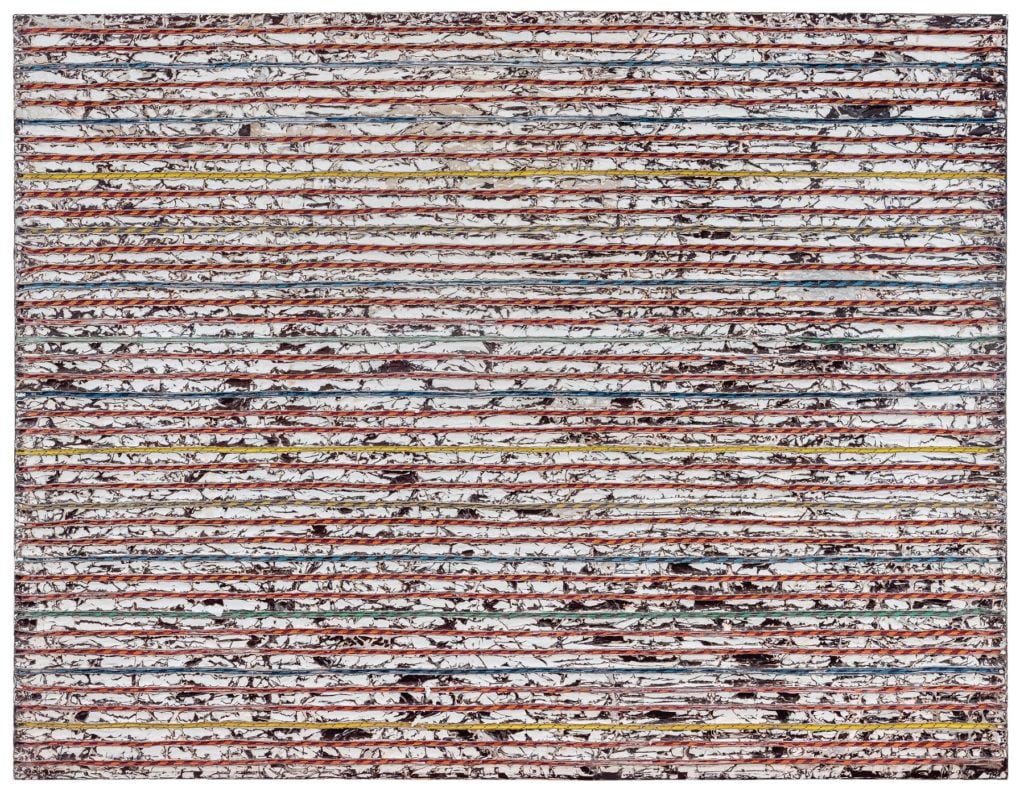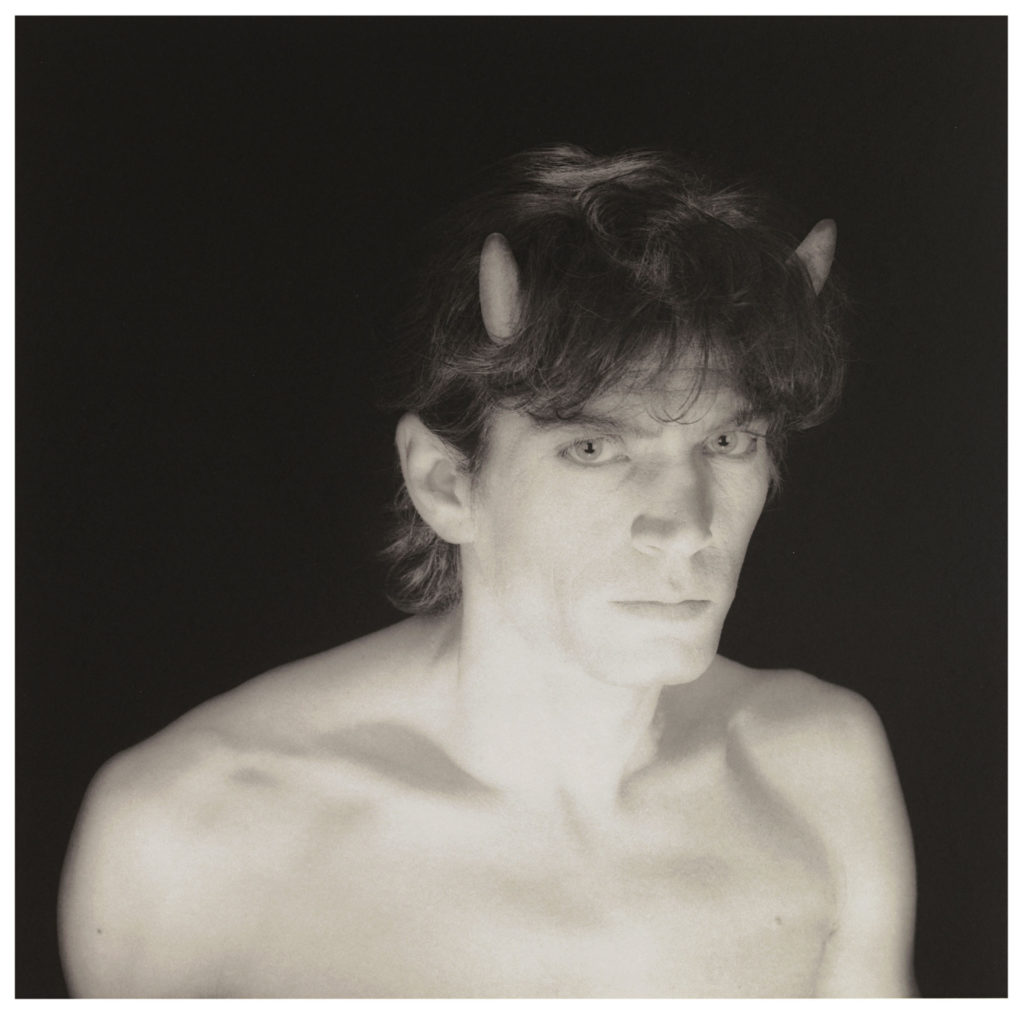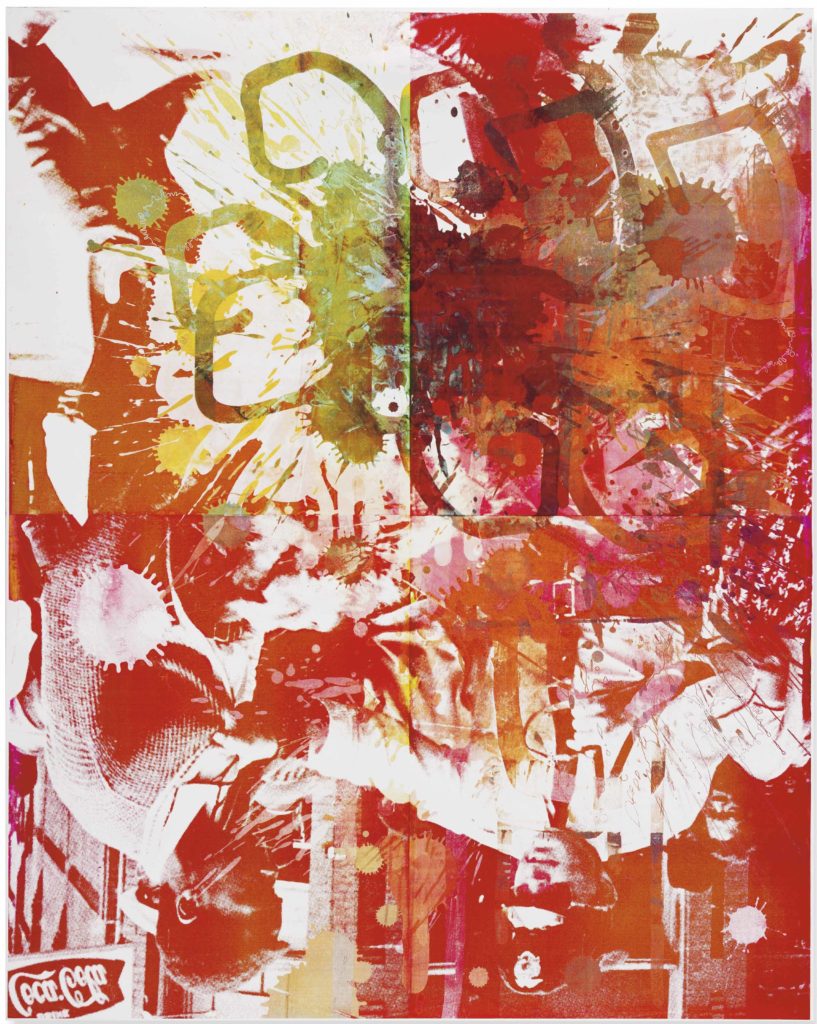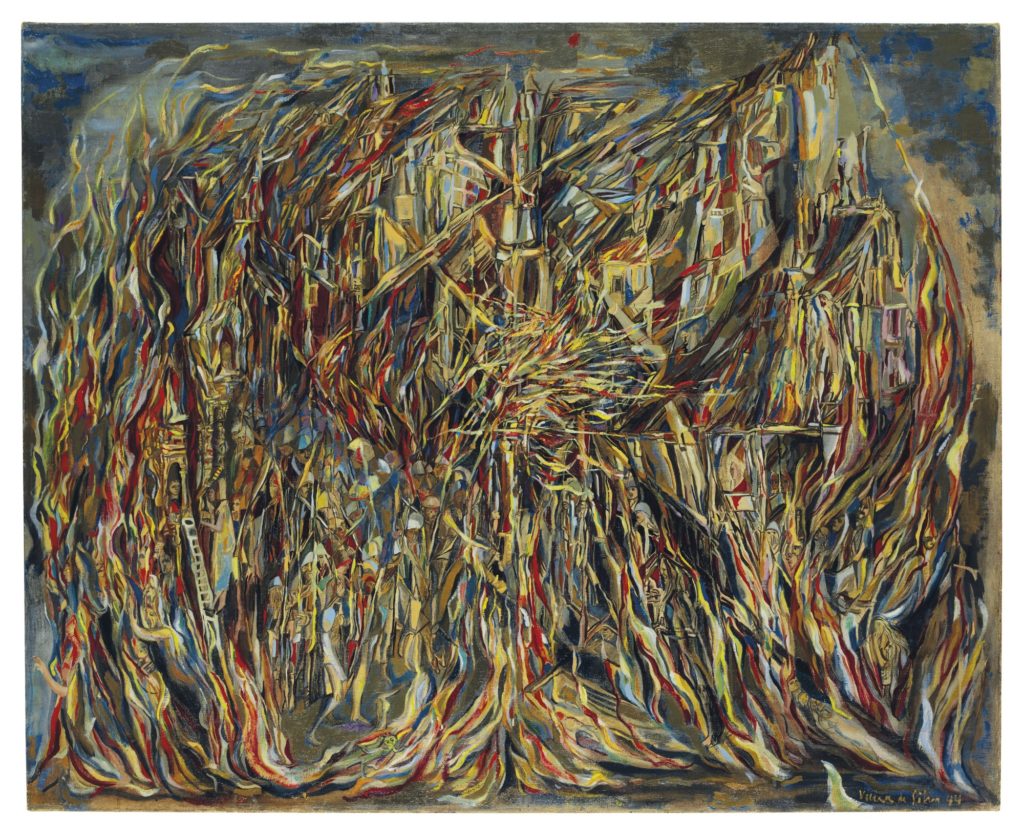Auctions
Christie’s Kicks Off London’s Contemporary Auctions With a Solid $192 Million Sale, Led by Warhol
New records were set for Mark Bradford, Kelley Walker, George Condo, and others.

New records were set for Mark Bradford, Kelley Walker, George Condo, and others.

Colin Gleadell

London’s contemporary art sales may have successfully dodged Chinese New Year by moving back from February to March. But they have gone almost head to head with TEFAF Maastricht and New York’s Armory Show.
Nevertheless, optimism was up that Christie’s, Phillips, and Sotheby’s sales would meet their combined £271 million to £413 million ($375 million-$572 million) target and exceed any previous London series for contemporary art, given the positive results on New York’s mid-season sales at the end of February. (The previous high for the series was £295.5 million in February 2014.)
Christie’s got the ball rolling this evening with a 65-lot sale estimated at £111 million to 161 million—way higher than last February’s £96.4 million sale (estimated at £67 million-£107 million), and its highest pre-sale estimate to date for a single contemporary sale in London. (Prices include buyers’ premium; estimates do not.)
The result was a solid, though not stunning, £137.5 million ($190 million), with 17 of the lots selling above estimates and only four lots unsold. This now rates as the highest total for any postwar and contemporary art sale in Europe—even if, at times, it didn’t feel like it.

Robert Mapplethorpe, Self-Portrait (1985). Courtesy of Christie’s Images Ltd., 2018.
The sale commenced unusually, with a group of four self-portraits by the photographer Robert Mapplethorpe, whose market has been quietly accelerating in recent years. Alison Jacques, who represents the Mapplethorpe estate in London, said this was due to astute management by the artist’s guardian, lawyer Michael Ward Stout, who has placed significant works in museum collections such as the Getty, without an eye to financial gain. Mapplethorpe’s elevated reputation as more than just a photographer has had a spin-off in the market place.
One of these self-portraits, a 1985 platinum print in an edition of just three, with horns protruding from the artist’s curly locks, had been acquired in 2007 for $37,000 and now sold within estimate to a phone bidder for £137,500 or $190,025. The under bidder for three of the photographs was the dealer Thaddaeus Ropac, who bought a fourth work, below the estimate for £87,500, but well in excess of its $25,000 cost in 2003.
There was a flurry of bidding for Francois-Xavier Lalanne’s sculptural desk in the shape of wild sheep as it doubled its estimate to sell for £1.4 million ($2 million) to an Asian buyer. Otherwise, Asian interest in the sale was hard to spot.
The sale then kicked into gear with its two top lots, both guaranteed, by Andy Warhol and Jean-Michel Basquiat. The latter’s five-foot-square Multiflavors had last sold in Paris for $118,000 in 1990, after the Basquiat market had taken its first leap. Now estimated at £10-£15 million, it drew little bidding and sold for £12 million ($16.6 million).

Andy Warhol, Six Self Portraits (1986). Courtesy of Christie’s Images, Ltd., 2018.
Warhol’s Six Self-Portraits, just 22 inches square each and painted in different colors, was made in 1986, the year before he died, for a show at Anthony d’Offay in London. In 2014 it sold in New York for $30 million, but since then the Warhol market has been treading water. Back on the block with a guarantee and low estimate of £16 million ($22 million) it barely held its value selling for £22.6 million ($31.2 million).
Another American high-flyer was expected to be Jackson Pollock’s small drip painting, No.21 (1950). There hasn’t been a good Pollock painting at auction for more than two years, so this was a test of how the artist’s market is evolving. But the work was just missing that magic ingredient and sold below estimate for £9.3 million ($12.9 million).
There was more competition for a 1985 horizontal wall sculpture by Donald Judd, which doubled its estimate selling for £1.3 million ($1.8 million) to London and New York dealer Nick Maclean, who was whispering American dollar prices to his client on the phone.
Further down the American ladder, Stefan Ratibor of Gagosian Gallery fought off competition from the Nahmad family to buy a Cy Twombly work on paper, On Returning to the Tonnicode (1973), above estimate for £1.3 million. A George Condo ink drawing, Three Nudes (2013), sold for £488,750 ($675,453), which is a record for a work on paper by the artist.
Agnes Martin’s 1961 grid with pyramidal forms, Words, appeared back on the block after having set a work-on-paper record for the artist of $825,000 in 2008. But it also suffered the ignominy of going unsold in 2012, albeit with a higher $900,000 estimate. This time, with only a slightly reduced estimate, it cleared that price, selling for £788,750 ($1.1 million)—a new record for a work on paper by Martin.

Kelley Walker, Black Star Press (2007). Courtesy of Christie’s Images, Ltd., 2018.
More contemporary American art was in demand. A tussle between art advisors Melanie Clore and Abigail Asher over Mark Bradford’s corrugated canvas, Bear Running from a Shotgun, 2014, sold above estimate for a record £3.8 million ($5.3 million), though that record, Christie’s conceded, would not last beyond Phillips’ sale of Bradford’s epic Helter Skelter (£6 million to £8 million and guaranteed) from the collection of John McEnroe on Thursday.
Another one for the record books was Kelley Walker’s large 2007 silkscreen painting Black Star Press, which had attracted a third-party guarantee just before the sale (a clear sign of market heat) and sold near the high estimate for £572,750 ($791,541).
The London sales always have a good representation of British art, led this time by a small Francis Bacon triptych of his friend Henrietta Moraes from 1976. Coming from the collection of the late Viennese architect Harry Gluck, the compositions had an uncharacteristic streak of hair running down the foreheads, and did not generate interest beyond a third-party guarantor who bought it below estimate for £10 million ($13.8 million)
Two paintings by the acclaimed British artist Peter Doig came from Canadian philanthropist Donald Sobey, who was raising funds to promote young Canadian artists abroad. Sobey had bought the more valuable, Charley’s Space (1991), for a double estimate £850,000 at a fund-raiser for the Whitechapel Art Gallery in 2006, and this time it beat its estimates again, selling to a phone bidder for £10.1 million ($15.1 million).
The only other British artist to exceed expectations was Grayson Perry, whose large pot, Barbaric Splendour (2003), from the Saatchi collection, sold for a double estimate £224,750—the second highest price for the artist and a handsome profit for the Chelsea dealer-collector who bought it the year it was made for a few thousand.
Moving to European artists, a large horizontal multi-slash white canvas by Lucio Fontana had an unusual diagonal black bar placed across the surface as part of its frame, which probably limited the bidding. But it also had a guarantee from Christie’s to protect its strong £8 million estimate, and it sold on a single bid for £8.7million—good enough for the seller who bought it in 1998 for £529,750.
A rarity was a 1944 painting by Portuguese artist Helena Vieira da Silva, L’Incendie 1, a figurative response to the horrors of war in Europe which anticipates the more familiar energetic grid structures of her postwar abstracted landscapes. Da Silva seems to have produced few paintings in this year, when she was in exile in Brazil, as this is the only one on record at auction with that date. Rightly estimated to exceed her record of £911,000 set in Paris in 2010 it duly succeeded selling for £2 million ($2.8 million).

Vieira Da Silva, L’incendie I (The Fire I) (1944). Courtesy of Christie’s Images, Ltd., 2018.